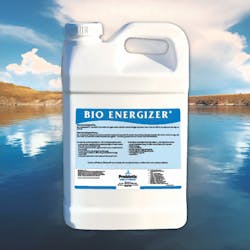Bioremediation Technology Improves Injection Well Performance
Facing closure of a 49-unit apartment complex in Arizona because of wastewater overflow in effluent injection wells, the engineer turned to bioremediation to bring the system back to its original capacity.
When the apartment complex was built in the mid-1980s, the consulting engineer recommended and installed an activated sludge wastewater treatment plant on site. Wastewater is treated and pumped to 14 underground injection wells (approximately 4 ft in diameter, and ranging from 10 to 14 ft deep) for disposal.
The system worked as planned for 10 years; however, after this amount of time the percolation efficiency of the wells had decreased significantly and the injection wells began to overflow. The water level in the wells began to rise up to and over the tops of the wells and spill out into the surrounding area at ground level. The owners of the complex thought they only had two alternatives. The first was to apply for state and county permits in order to build additional injection wells on site. The second was to simply close the complex. This was not a viable option. Something had to be done to improve the percolation rate.
A Third Option
The plant operator suggested a third alternative: biologically reduce the residual solids and biofilm that were causing the injection wells to clog and overflow. The product used at the Arizona site speeds up the natural biological degradation of biofilm and biomass. In addition, this product reduces the volume of solids and dissolves the thin layer of oil, grease, solids and biofilm clogging the pores of soil in the injection wells. All of these improvements enhance the soil’s capacity to absorb more reclaimed water without the need to install more wells.
The engineer initially applied some of the mixture to each overflowing well to jump-start the system and improve the percolation rate. In addition, the liquid-based product was applied directly at the wastewater treatment plant at a dosing rate of 10 mg/L of wastewater for the first 30 days to improve overall system performance. Within one to two weeks, the standing water at the wells had disappeared. After an additional two weeks, the water level within each of the wells had become significantly lower. For the next 60 days, as the water levels in the wells continued to recede, the application rate was reduced to 1 mg/L. After 90 days, when the system was working at its original capacity, the engineer decided to use 0.5 to 1 mg/L of the product on a continuing basis for maintenance.
Cost Savings
The bioremediation technology used at the Arizona reclaimed water injection well site and wastewater treatment plant cost approximately $600 per month initially and less than $300 per month for the small plant to maintain the system’s improved performance. The cost of constructing more injection wells at the time was estimated to be $10,000 to $15,000 per well. The liquid bioremediation product, Bio Energizer, supplied by Probiotic Solutions, saved the owner significant capital investment costs while avoiding the need to acquire new permits from regulatory agencies.
Download: Here
